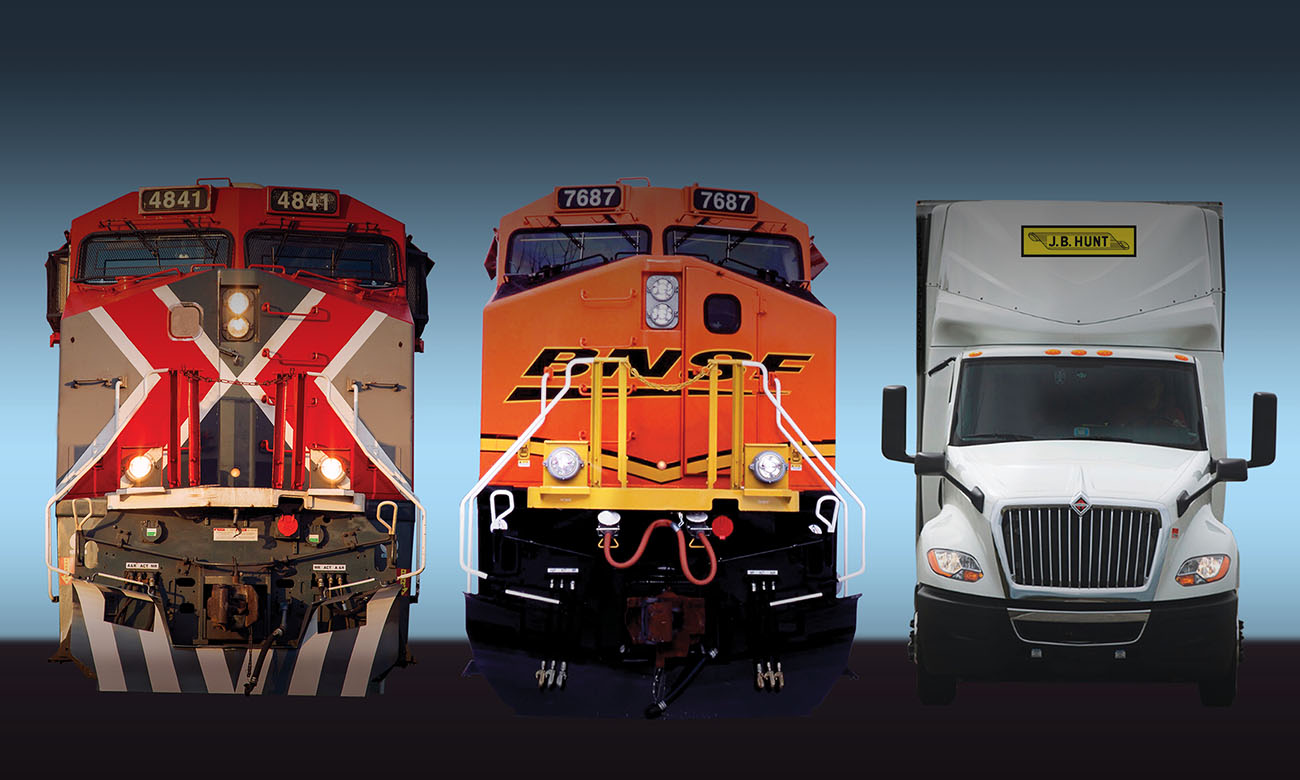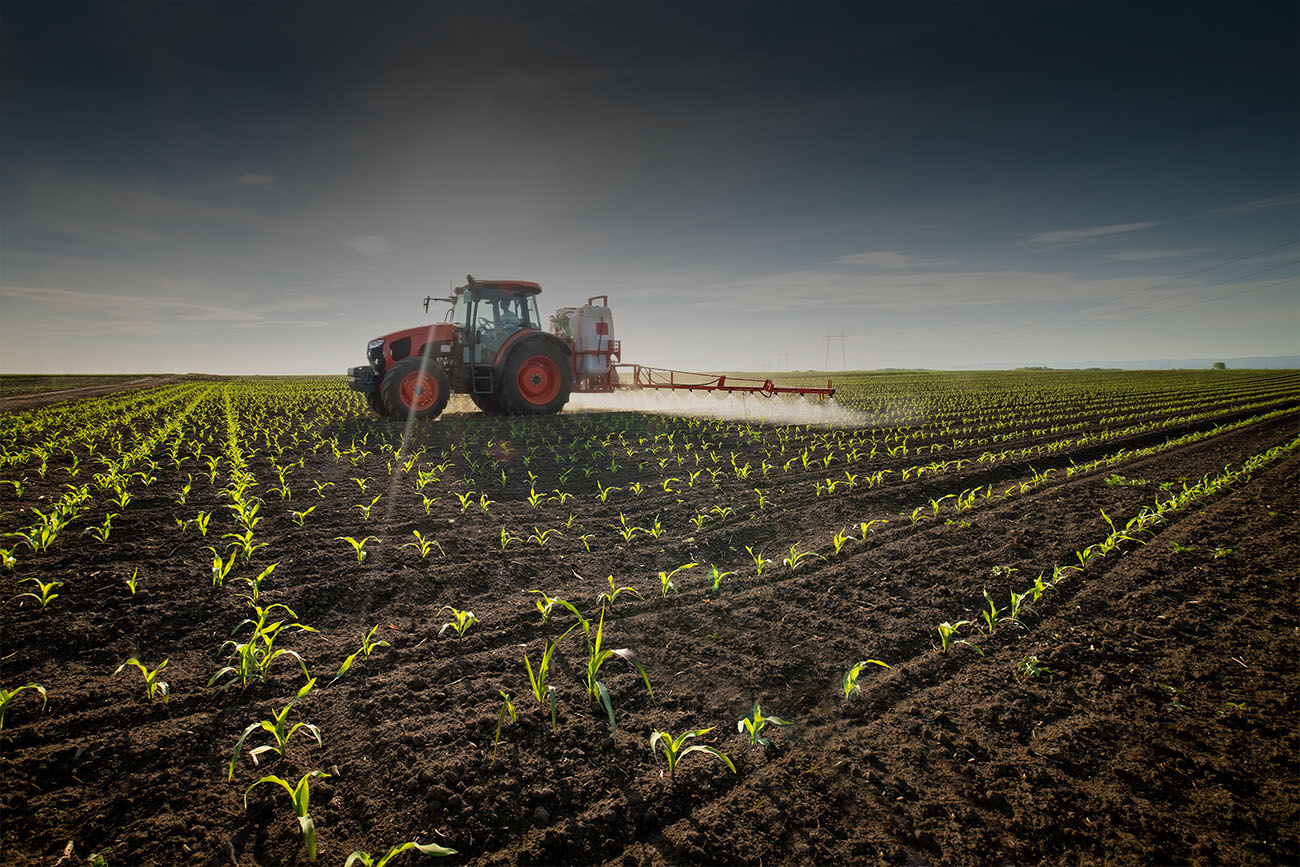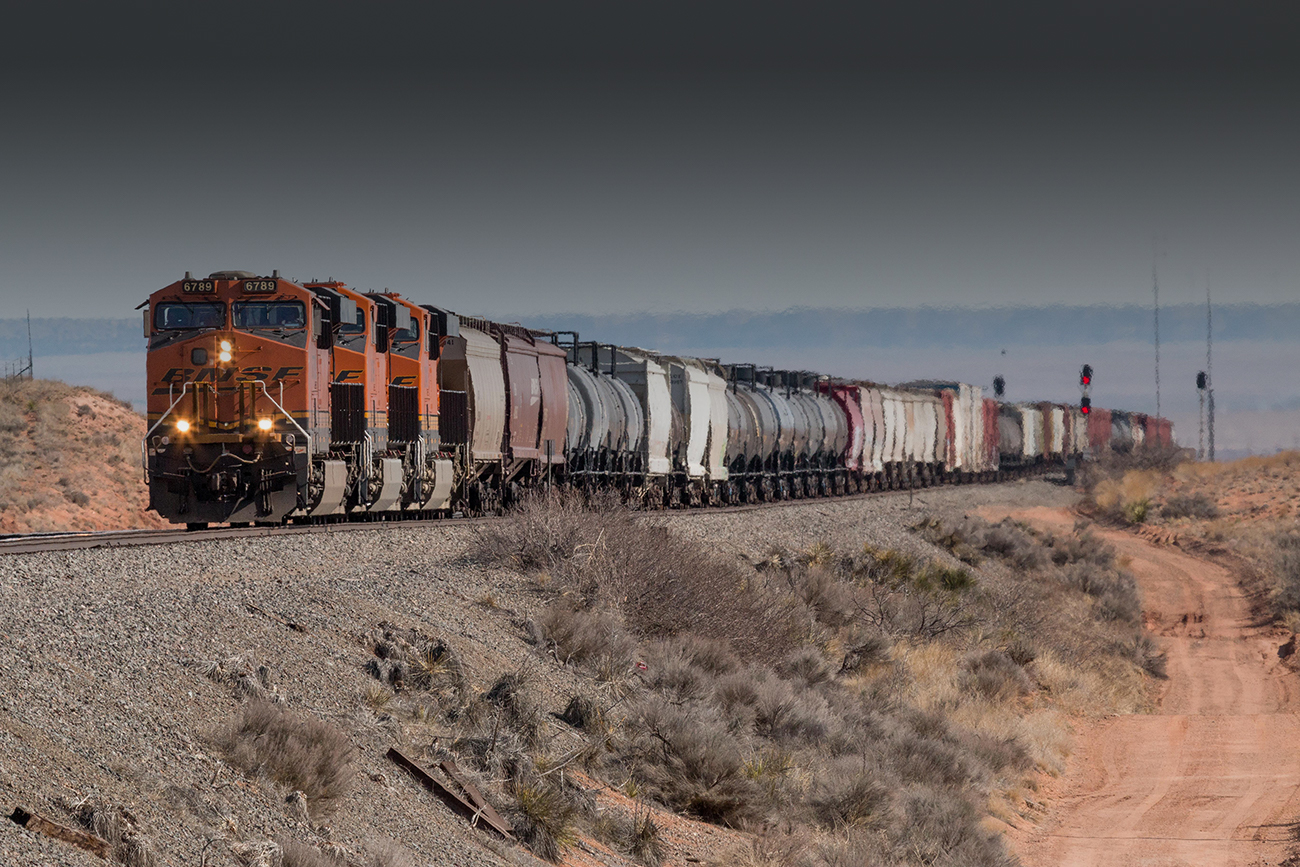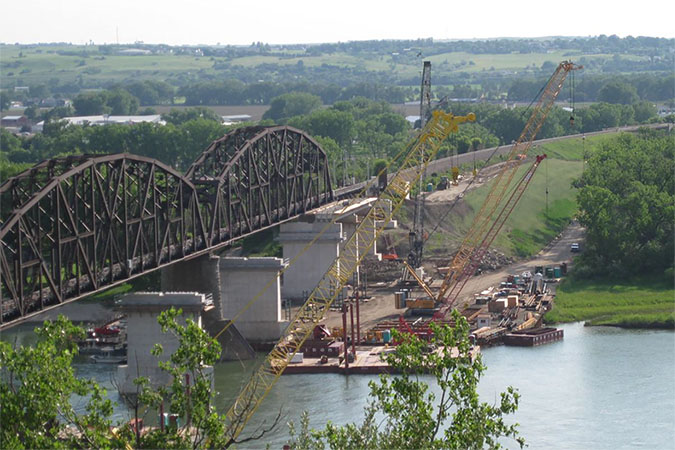
BNSF’s Bismarck bridge construction passes halfway mark
By SUSAN GREEN
Staff Writer
A hot summer day is best spent on the water, and in the Bismarck-Mandan, North Dakota, area, boaters and anglers are safely doing that in the shadow of railroad bridge construction. For nearly two years, BNSF has been constructing a new bridge across the Missouri River here and making sure that a channel is open so water navigation can continue.
“This is a significant project with 24/7 work, but we’ve made sure the river is clear for recreational and commercial boats,” Mike Schaefer, manager for BNSF engineering, said. Lighting and buoys help vessels clearly navigate the river during construction.
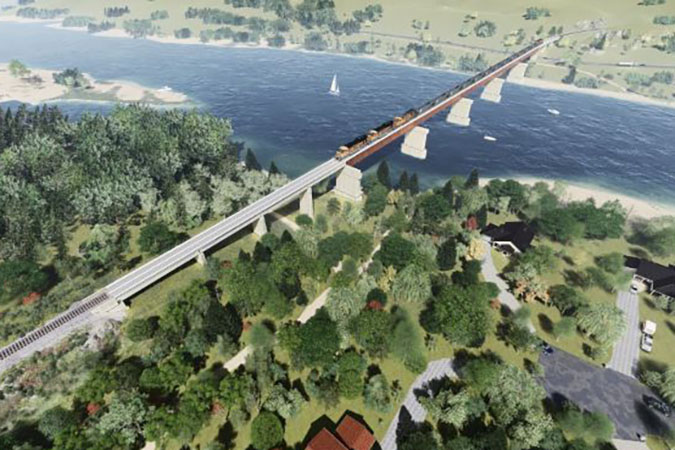
The new single-track bridge, replacing the 140-year-old adjacent bridge, built by predecessor Northern Pacific, will support heavier, wider and taller freight. The new 1,554-foot-long bridge will feature four main structural steel spans with precast concrete girder approaches. It’s also been designed with piers that are wide enough to accommodate a second track if needed in the future.
“North Dakota is one of the most freight-dependent states in the nation — our economy relies on efficient, reliable transportation to move agricultural products, energy resources and manufactured goods in and out of the state,” said President and CEO of the Greater North Dakota Chamber Arik Spencer. “The replacement of this critical piece of infrastructure ensures that freight rail remains a strong and resilient backbone for our state’s industries. Investments like these not only protect our supply chain they safeguard future economic growth and support the businesses and communities that rely on dependable rail service.”
Work on the new BNSF bridge this summer has involved constructing cofferdams (the area where new piers will eventually rise) for Piers 5 and 6. Additional work includes erecting the spans for the bridge’s superstructure, the “top” of the bridge. By year’s end, nine of the 12 new spans should be complete.
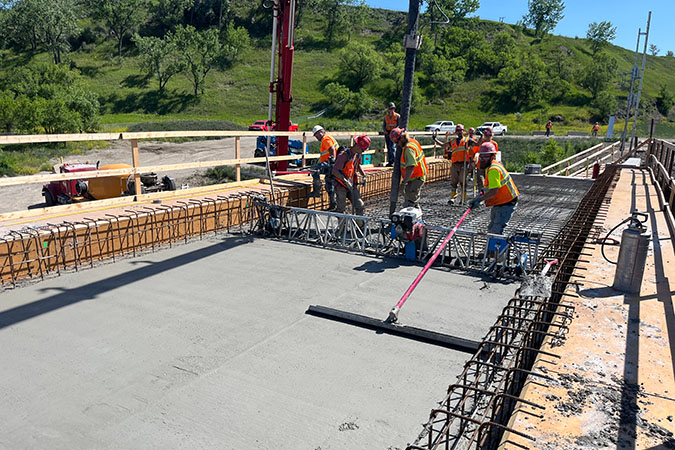
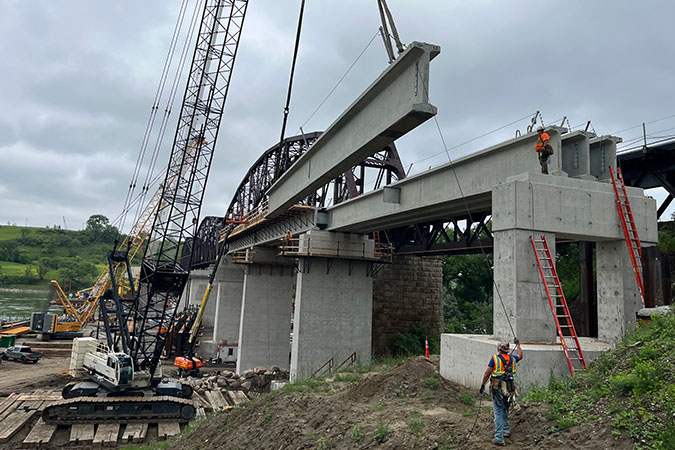
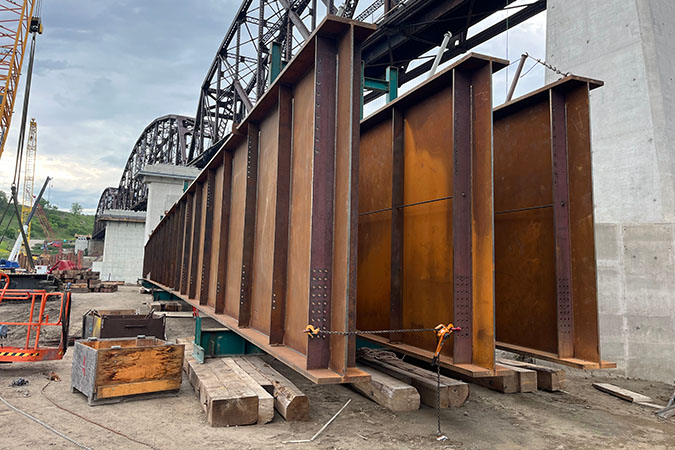
Pile driving is also occurring this summer, with some of the work happening at night. “We realize this is an inconvenience, and the crews have been trying to conduct quieter work overnight to the extent possible,” said Schaefer. “But some pile driving will occur at night during certain phases so we can complete the 2025 work on time.”
The goal of this year’s work is to have the two new piers in place before winter. If the timeline isn’t met, the whole project could be pushed out. “We need to get the two river piers constructed such that they are above the water level by the end of this construction season, and then we can add height to them next season,” Schaefer explained.

One noticeable difference between the new bridge and the existing is the span types. The original is a truss style, a framework of interconnected triangles needed for longer spans. Its piers are 400 feet apart; the new bridge will be flatter-looking steel girders with piers 200 feet apart.
While the space between the new piers is less, there will be sufficient space for boats to operate in the summer and ice to flow in the winter.
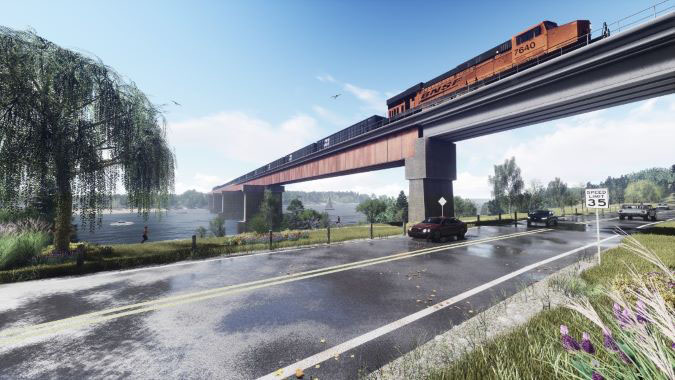
Once the new bridge is completed in 2026, work to remove the old bridge can begin. Under a grant program funded by BNSF and set up for the project, a portion of the old bridge’s granite blocks that can be successfully removed will become part of a new welcome sign for the city of Mandan.
For project updates, go here.
